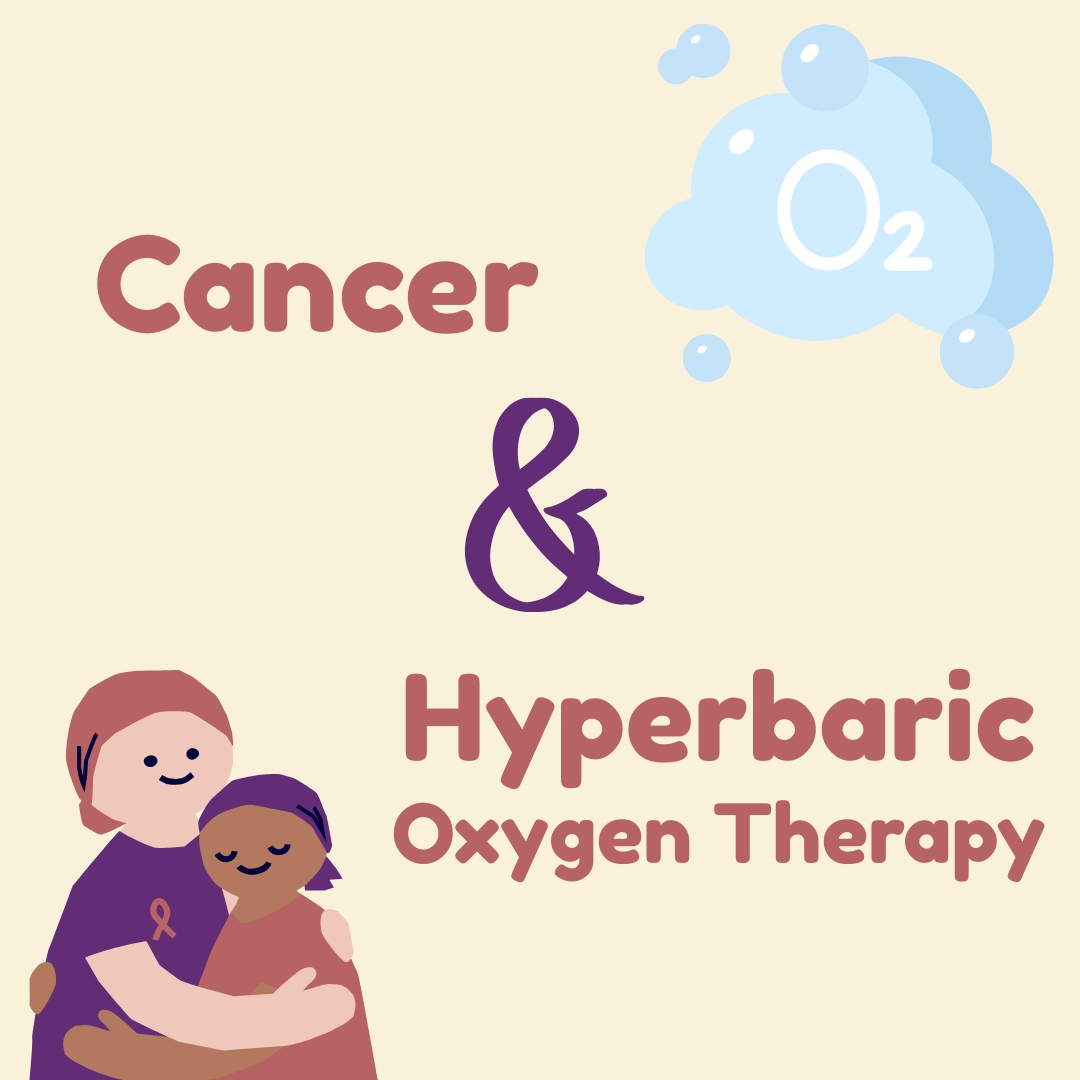How Can Hyperbaric Oxygen Therapy (HBOT) Support Traditional Cancer Treatment?
Hyperbaric oxygen (HBOT) therapy has been shown to be a safe complementary option for cancer care patients, regardless of the stage of their illness.
In the initial stages of cancer treatment, HBOT serves as a valuable sensitiser, potentially increasing the effectiveness of radiotherapy and chemotherapy. As the disease progresses, it aids in alleviating the late side effects of cancer treatment, such as radiation injury. Additionally, HBOT therapy contributes to bolstering the immune system and promoting regenerative processes, thereby significantly influencing the overall outcome of the disease. Moreover, it plays a pivotal role in enhancing the quality of life for individuals recovering from cancer. This article explores the various benefits and potential of HBOT as an adjuvant therapy for cancer patients.
Though cancer treatment has changed much over the years, still surgical removal of cancer tissues, killing cancer cells with radiation therapy, and chemotherapy forms the backbone of cancer care. These treatments work in most cases. Though these methods are highly effective, treatments like radiation therapy and chemotherapy also kill many healthy cells, causing many side effects. Other treatments may be cancer-specific, like bone marrow transplants, immune therapy, and targeted drug therapy. Additionally, doctors may use therapies that enhance the effectiveness of cancer treatments, and this is where hyperbaric oxygen therapy comes into play.
A review of studies done between 2004 to 2012 found that there is sound evidence that Hyperbaric Oxygen Therapy has tumour-inhibitory action, and tumour oxygenation appears to be the reason for the suppression of cancer growth. Not only that, but HBOT also increases the sensitivity of cancer cells to chemotherapy and radiotherapy. Thus, the National Cancer Institute describes Hyperbaric Oxygen Therapy as a type of radio-sensitising agent and a type of chemo-sensitising agent.
All this means that HBOT may potentially help fight cancer by suppressing cancer growth and boosting the body’s ability to fight cancer. This will work even better when combined with treatments like radiotherapy and chemotherapy. This is really good news since it means that it fits perfectly well into traditional cancer care and does not interfere with the those treatments.
Of course, apart from reducing hypoxic regions in a tumour and increasing sensitivity to other treatments, HBOT also works in many other ways, providing an excessive oxygen supply, it may disrupt the growth of new blood vessels inside the tumour (disrupt angiogenesis). Further, oxidative stress caused in tumour cells may also help kill cancer cells. Additionally, researchers say that HBOT significantly alters the tumour microenvironment at multiple levels, which results in a significant anti-cancer effect of the therapy. To sum up, HBOT therapy is quite a safe adjuvant therapy that is good for managing cancer patients at any stage. In the early cancer treatment stage, it may act as a sensitiser and enhance the efficacy of radio and chemotherapies. At later stages, it may help overcome late side effects of cancer care, like late radiation injury. Further, it may help by boosting immunity and enhancing regenerative processes, thus significantly impacting the disease outcome. Finally, it may substantially improve the quality of life of those recovering from cancer.
HBOT is currently being utilised in conjunction with conventional treatments, including radiation and chemotherapy to attain optimal dosage, stimulate tumour regression and reduce the side effects of treatments.
Cancer thrives in hypoxic environments and HBOT has been shown to increase oxygen levels to weaken tumours and reduce their aggressiveness.
Studies have shown that the benefits of using HBOT as a complimentary therapy can:
• Reduce tumour hypoxia
• Decrease tumour drug resistance
• Improve Chemo and radiation results
• Allow optimal dosage therapy to be attained
• Reduce side effects of chemo and radiation
• Weaken hypoxic tumours
• Target metastatic tumours
• Regress tumour volume
• Amplify Apoptosis effect
• Increase Oxy-Radical effect
• Increase IV Vitamin C effect
In HBOT, the patient breathes concentrated oxygen in a pressurised chamber, typically at pressures higher than atmospheric pressure. The increased pressure allows for greater oxygen dissolution in the bloodstream, leading to higher oxygen delivery to tissues and organs throughout the body.
HBOT is commonly used for various medical conditions, including decompression sickness, non-healing wounds, carbon monoxide poisoning, radiation injuries, and certain infections. The increased oxygen levels in HBOT promote tissue oxygenation, enhanced wound healing, reduction of inflammation, and potential antibacterial effects.


